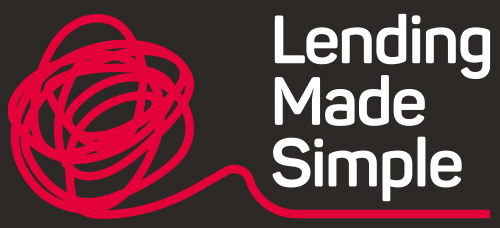REVOLVING CASHFLOW ARRANGED BY LENDING MADE SIMPLE
Everything You Need to Know About a Revolving Cashflow Facility
The topic of personal and business loans is under the microscope at the moment, with more people than ever exploring ways to ride the tides of economic uncertainty. The revolving cashflow facility offered by some lenders is an interesting loan option for some businesses.
Is this the best financial option for you?

What is Revolving Cashflow?
A revolving cashflow facility (RCF) operates much the same as an overdraft with your bank. An agreed amount of funds is made available to you which you can access at any time. Interest is then calculated daily based on the amount of money you have used, and you are free to make repayments when you can.
As the world grows and changes, every business owner will face the challenge of economic troubles, fluctuating currencies, accidents, or fraud.
They may also be looking forward to business growth, larger premises, a bigger staff complement, or investing in new technology.
Because we can’t foresee what’s over the horizon, it’s comforting to know that we have something to fall back on – in this case, a revolving cashflow facility.

What are the benefits of revolving cashflow?
An RCF is an incredibly flexible financial vehicle.
Unlike instalment loans, an RCF allows you to access and repay varied amounts at any point during the agreed loan period.
This means that you can draw what you need to, when you need it, without having to reapply for a loan and run the paperwork marathon all over again.
Interest is calculated daily and only charged on the amount that you are currently using which makes it easy for you to manage your cashflow. Any excess funds can be paid into the loan which reduces the daily interest while keeping those funds available to you.
Revolving credit, in contrast to instalment loans, is not subject to early repayment penalties.
A well-managed revolving cashflow account assists with a good credit history while still offering the freedom to pay in and withdraw at will.

Cons of revolving cashflow
While there are certainly many good reasons to opt for an RCF, there are also factors which may not serve you.
Just as a well-managed account can boost your credit rating, a poorly managed one will harm it. Because of the level of flexibility granted in an RCF, some borrowers may allow the facility to get away from them and find themselves skipping interest payments or overextending themselves.
Interest in revolving credit facilities are generally higher than on instalment loans, so carrying the outstanding balance for a period of time can get costly. It’s worth chatting with your lender about how to best manage your payments to avoid excessive interest or penalties.

Revolving loans vs instalment loans
One source sums up the difference between the two as follows; “With instalment debt, you borrow a fixed amount in one lump sum; unlike a credit card, you can’t keep borrowing as you pay off your balance. Instalment loans have predetermined end dates, so you know when you’ll be done with the loan. Mortgages, auto loans, student loans, and personal loans are all examples of instalment debt.”
In contrast, “A “revolving” credit account is an account where your monthly payment is based on your balance, which can change from month to month. Revolving balances can also be paid in full without incurring finance charges if paid within the “grace period.” (Source)

Managing revolving cashflow facilities
As with any loan, there are risks which come along with the relief of having access to extra funds.
The key to making the best of the facilities available to you lies in managing revolving facilities as well as you can. Paying careful attention to how you manage your loans can set you up for more substantial credit facilities in the future.
Entrepreneur says, “Young businesses can often have a hard time qualifying for larger loans if both the business and the owners don’t have a strong credit history to report. Taking out a smaller loan and making regular on-time payments will build your business’s credit for the future.”

What can an RCF be used for?
An RCF is generally used to smooth out the financial peaks and troughs which come along with running a business. New businesses, in particular, can benefit from a buffer such as this.
Very few businesses can start out with no funding, which means that most small operations and start-ups will take their first economic steps with the burden of debt on their shoulders. However, recent economic tremors have shaken even established businesses and these too may need to rely on outside assistance to get back to normal.
Outside of these examples, an RCF is commonly used when:
Moving premises
If you’re making use of every inch of your office and you still need to take on more staff to care for your growing business, then you’re likely considering buying or leasing a larger space. This is an exciting time for a business but can also be a costly one. Not only are you facing deposits and higher rentals, but there will be a requirement for more office furniture, signage, moving costs, hardware, phone lines and so much more.
A revolving loan is an ideal way to access the funds you need as your business grows, safe in the knowledge that you will be able to repay the balance with higher productivity levels.
Buying stock
The ebb and flow of stock is a good indicator of the health of a business. However, if your business is seasonal and you’re expecting the Black Friday or Christmas rush then you may need to depend on a quick and easy financial injection to boost stock levels.
It may also occur that you could benefit from a bulk discount or another business deal which is too good to refuse. Finding some quick cash for great opportunities like these is easy with an RCF.
Updating Equipment
Whether you need new computers or an updated piece of manufacturing equipment, an RCF offers a safe and flexible bridge to getting what you need. However, make sure to do your sums and ensure that what you’re purchasing is both necessary and will contribute to paying off the loan.
Seasonal business
Businesses within the travel and tourism industry often have a feast or famine situation which can be tricky to manage. During quiet times, an RCF can assist with essential maintenance or salaries, and these shortfalls can be quickly caught up during the busy season which follows.
Choosing between a loan and an overdraft
If the revolving cashflow facility is much like an overdraft, how do you choose between them? What option is best for your unique circumstances?

MoneySupermarket has some interesting thoughts on this, highlighting some differences between the two financial choices.
“Overdraft. An agreed overdraft can be a useful tool if you want to borrow money over the short-term or in an emergency. An overdraft allows you to borrow money through your bank's current account up to a certain limit. You may find your bank automatically offers you an overdraft, or you have to request this facility.
“You will usually have to pay interest or fees on your overdraft. There are a few banks that offer interest or fee-free overdrafts, but these typically only apply up to a relatively low limit or for a set time.
“Loan. A loan is an agreement whereby you borrow funds that you’ll have to repay with added interest. You typically repay the loan in monthly instalments. An unsecured or personal loan is not secured against an asset such as your home. Secured loans, on the other hand, will usually be secured against your property and need to be considered carefully.”

Overdraft facilities in the UK from major banks have come fire recently and it’s well worth doing your homework before following this route.
Metro published an article on the Interest rate changes made in the first half of 2020.
“Among the changes that have already been announced, Lloyds Banking Group customers are to be charged new ‘personalised’ overdraft rates of up to 49.9% from April.
HSBC, First Direct and M&S Bank will all introduce rates of 39.9% from March 14.
NatWest will charge up to 39.49% for overdraft borrowing and Barclays will introduce a new overdraft rate of 35%.
TSB will charge customers 39.9% from April.
Nationwide Building Society has already imposed a single rate of 39.9% across its adult current account range.”
Read the full article here.

The Revolving Cashflow Facility in Summary
No doubt you have a lot to think about as you decide which business loan is the best option for you.
In the interests of simplicity, this is what you can expect from an RCF:
Credit ranges are available from £10,000 to £500,000
No management fees
No charges for early repayment
Fixed rates for the period of the loan
Available to businesses with less than 12 month’s trading
Loan amounts depend on your business performance and credit record
Generally, require a personal guarantee
Available to registered UK businesses
Must have been trading for a minimum of 3 months
Do you qualify for a revolving cashflow facility?
If so, please get in contact with one of our team here at Lending Made Simple and we will be more than happy to assist you.
If you don’t qualify for an RCF but you need additional finance, please feel free to chat with us. There are other financial vehicles available which may be suitable for you, and we can work through the different options with you.
Business may be challenging at times, but making the right financial decisions based on sound advice is the best remedy.
Please contact the Lending Made Simple team for all your personal and business loans.


